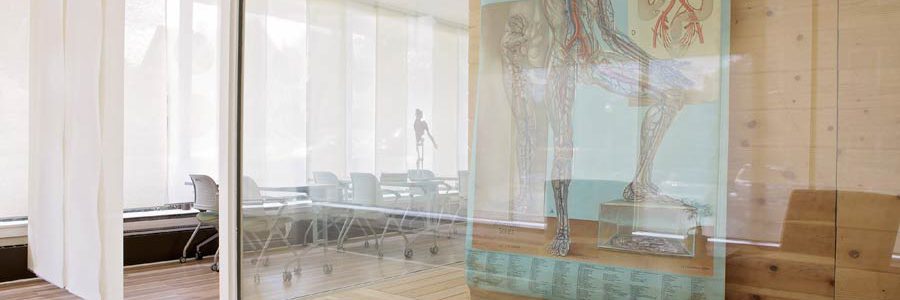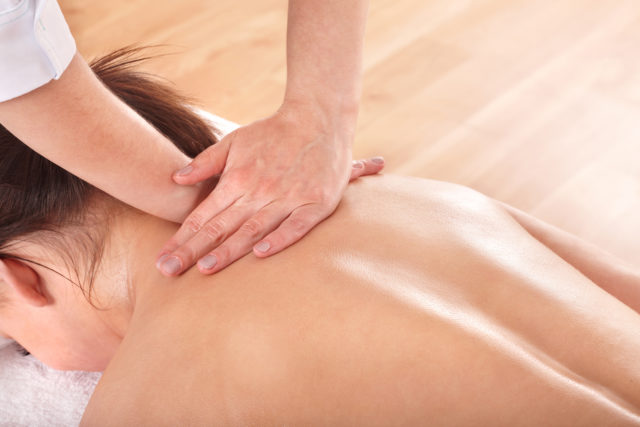 Introduction: Embarking on a journey into the world of massage therapy is an exciting and fulfilling endeavor. As a massage therapy student, you are about to dive into a field that combines science, art, and healing. To make the most of your educational experience and lay a solid foundation for a successful career, it is crucial to develop effective study skills. In this blog post, we will explore the top 10 study skills that will help you excel as a massage therapy student.
Introduction: Embarking on a journey into the world of massage therapy is an exciting and fulfilling endeavor. As a massage therapy student, you are about to dive into a field that combines science, art, and healing. To make the most of your educational experience and lay a solid foundation for a successful career, it is crucial to develop effective study skills. In this blog post, we will explore the top 10 study skills that will help you excel as a massage therapy student.
- Establish a Structured Study Routine: Creating a structured study routine is essential to maintain consistency and manage your time effectively. Designate specific study hours each day, eliminate distractions, and create a conducive environment for focused learning. This routine will foster discipline and optimize your ability to retain information.
- Set Clear Goals: Clearly define your goals and objectives for each study session. Establishing specific targets, such as mastering a particular technique or memorizing the skeletal system, will give you direction and purpose. Breaking down larger goals into smaller, manageable tasks will make your learning process more manageable and motivating.
- Utilize Active Learning Techniques: Engage actively with the material to enhance comprehension and retention. Instead of passively reading textbooks, employ active learning techniques such as summarizing information in your own words, teaching concepts to others, participating in group discussions, or creating flashcards for key terms and concepts. These activities encourage deeper understanding and better memory recall.
- Develop Note-Taking Skills: Effective note-taking is a fundamental study skill that helps consolidate information and provides a valuable resource for later review. Develop a system that works best for you, whether it’s using handwritten notes, digital apps, or a combination of both. Organize your notes, highlight essential points, and use visual aids like diagrams and mind maps to enhance understanding.
- Practice Hands-On Techniques: As a massage therapy student, hands-on practice is integral to mastering the craft. Regularly allocate time to practice various massage techniques, bodywork modalities, and palpation skills. Seek opportunities to practice on willing friends or family members, and consider joining study groups or attending workshops to refine your skills further.
- Make Use of Visual Resources: Visual aids can be incredibly valuable in understanding complex anatomical structures and physiological processes. Seek out visual resources such as anatomical charts, videos, interactive apps, or 3D models to enhance your understanding. These resources provide a dynamic and engaging way to reinforce your knowledge and grasp challenging concepts.
- Seek Out Multiple Learning Sources: While your course material serves as the foundation, supplementing it with additional learning sources can broaden your understanding. Explore textbooks, scholarly articles, reputable online resources, and journals related to massage therapy. This multidimensional approach exposes you to diverse perspectives and keeps your learning experience engaging and enriched.
- Engage in Self-Assessment: Regular self-assessment helps you gauge your progress and identify areas that require further attention. Create quizzes or practice exams for yourself using your study materials, or utilize online resources designed for massage therapy students. Self-assessment enhances your confidence, highlights knowledge gaps, and guides your future study efforts.
- Take Breaks and Practice Self-Care: While diligent study is crucial, it’s equally important to take breaks and prioritize self-care. Long hours of studying can lead to mental fatigue and decreased retention. Incorporate short breaks during your study sessions, engage in physical activity, practice relaxation techniques, and ensure you get enough sleep. Taking care of your well-being will enhance your overall academic performance.
- Collaborate and Communicate: Learning is often more effective when done in collaboration with others. Engage in study groups or online forums where you can discuss concepts, exchange ideas, and learn from your peers. Communication with instructors, mentors, and experienced professionals can also provide valuable insights and guidance.
Conclusion: Mastering the study skills necessary for success as a massage therapy student is a journey in itself. By establishing a structured routine, setting clear goals, utilizing active learning techniques, and engaging in hands-on practice, you’ll be well on your way to becoming a skilled and knowledgeable massage therapist. Remember to take care of yourself, seek out diverse learning sources, and collaborate with others to enhance your understanding. With these top 10 study skills in your arsenal, you are poised to excel in your massage therapy education and embark on a fulfilling career that promotes wellness and healing.

Attend a Hybrid Massage Therapy Program!
 Massage therapy is a practice that involves the application of pressure, movement, and vibration to the soft tissues of the body. It has been used for thousands of years to relieve pain, promote relaxation, and improve overall health and well-being. Today, massage therapy is recognized as a valuable form of complementary medicine and is offered in a variety of settings, including spas, clinics, and hospitals.
Massage therapy is a practice that involves the application of pressure, movement, and vibration to the soft tissues of the body. It has been used for thousands of years to relieve pain, promote relaxation, and improve overall health and well-being. Today, massage therapy is recognized as a valuable form of complementary medicine and is offered in a variety of settings, including spas, clinics, and hospitals.
If you’re interested in pursuing a career in massage therapy, you may be considering attending a massage therapy program. However, with the advent of hybrid learning, you now have the option of attending a hybrid massage therapy program, which combines both online and in-person learning. In this blog post, we’ll explore the benefits of attending a hybrid massage therapy program in greater detail.
- Flexibility: One of the biggest benefits of a hybrid massage therapy program is flexibility. With a hybrid program, you have the flexibility to attend classes online or in-person. This means that you can tailor your learning experience to fit your schedule and preferences. For example, if you have a busy work schedule, you may choose to attend online classes during the week and in-person classes on the weekends. Alternatively, if you prefer to attend classes in-person, you can do so without having to commit to a full-time schedule.
- Convenience: Attending a hybrid massage therapy program also offers convenience. With online classes, you can learn from the comfort of your own home or any location that has an internet connection. This means that you can save time and money on commuting, parking, and other expenses associated with attending in-person classes. Online classes also allow you to learn at your own pace, which can be helpful if you need more time to absorb the material or have other commitments that take up your time.
- Personalization: Another benefit of a hybrid massage therapy program is personalization. With online classes, you can learn at your own pace and review materials as often as you need to. You can also communicate with your instructors and classmates through online forums and email, which can help you get personalized feedback and support. In-person classes also provide opportunities for personalized learning, as you can receive direct feedback from instructors and collaborate with other students in hands-on exercises.
- Hands-on experience: While online classes provide a great deal of flexibility and convenience, there is no substitute for hands-on experience. Attending in-person classes allows you to practice massage techniques on real clients under the supervision of experienced instructors. This gives you the opportunity to develop your skills and gain valuable experience in a real-world setting. In-person classes also provide opportunities to ask questions and receive feedback in real-time, which can be helpful for improving your technique and building your confidence.
- Cost-effective: A hybrid massage therapy program can provide significant cost savings for students. By attending online classes, students can save money on transportation costs, such as gas and parking fees, that are associated with commuting to and from school. Additionally, students can save money on other expenses, such as meals and childcare, that may be necessary when attending in-person classes. By attending online classes from the comfort of their own homes or other locations, students can avoid these additional costs and focus on their studies. Furthermore, hybrid programs often offer financial aid and scholarships that can help offset the cost of tuition. By taking advantage of these resources, students can make their massage therapy education more affordable and accessible. Overall, a hybrid massage therapy program provides a cost-effective way for students to pursue their career goals while saving money on the associated costs of attending school.
- Career readiness: Attending a hybrid massage therapy program can also help you prepare for a successful career in massage therapy. With a combination of online and in-person classes, you can develop a comprehensive understanding of massage techniques, anatomy, and physiology. You can also learn about business and marketing strategies that can help you build and grow your own massage therapy practice. In addition, attending a hybrid program can help you develop the soft skills that are essential for success in any career, such as communication, teamwork, and problem-solving.
- Networking opportunities: Finally, attending a hybrid massage therapy program provides opportunities for networking. In-person classes also provide opportunities to ask questions and receive feedback in real-time, which can be helpful for improving your technique and building your confidence. Additionally, attending in-person classes allows you to network with other students and instructors in the program. This can help you build connections in the massage therapy community and learn from experienced professionals.Attending a hybrid massage therapy program can also help you develop important soft skills that are essential for success in any career. Online classes require self-motivation, time management, and communication skills to succeed. These skills are highly valued by employers and can help you stand out in the job market. In-person classes provide opportunities for collaboration, teamwork, and leadership development, which are also highly valued by employers. By developing these skills in a hybrid program, you can become a well-rounded candidate for massage therapy jobs and other careers.
In conclusion, a hybrid massage therapy program offers a flexible, convenient, and personalized approach to learning that can help you achieve your career goals. By combining online and in-person classes, you can get the best of both worlds and develop a comprehensive understanding of massage techniques, anatomy, and physiology. You can also learn about business and marketing strategies that can help you build and grow your own massage therapy practice. With hands-on experience, cost savings, career readiness, networking opportunities, and the development of important soft skills, a hybrid massage therapy program can be an excellent investment in your future.

10 Benefits of Attending a Hybrid (Online & In-Person) Massage Program
 Clear Benefits For Professionals In Multiple Fields
Clear Benefits For Professionals In Multiple Fields
Whether you’re in massage therapy already, you work as a registered nurse, assist in physical therapy offices, operate as a fitness trainer, lead yoga classes, instruct Pilate courses, or assist seniors at a nursing home, there are clear benefits to programs from hybrid massage schools.
When you can simultaneously study online, and in person, you get the best of both worlds. We’ll explore some key benefits of hybrid training here to help give you a better idea of how such learning can work for you.
1. Education On Your Schedule
It’s hard enough to work, let alone get a simultaneous supplemental education. If you’re not working, it can still be hard to learn owing to other basic factors of day-to-day life. With hybrid massage schools, you can use online courses for inconvenient scheduling; then drop into live classes when you have the ability.
2. Work And Study Simultaneously
Many schools require intensive attendance to acquire certification. In today’s world, that’s just not feasible for most. The cost of living just keeps getting higher, and time is literally money. With hybrid massage schools, you can maximize yours.
3. Expedite Tech Familiarity, Learning New Programs Like Zoom
Zoom is a program for face-to-face group interaction that is presently revolutionizing online education. Technology resources like these often have collateral potential beyond the classroom.
Whatever digital interface you use for your hybrid massage schools, you’ll be able to take that knowledge with you. This can come in handy elsewhere, as today’s world has ample opportunity for non-centralized online interaction.
4. Make New Contacts Locally And Across The Country–Even The World
With online hybrid massage schools, you’ll be able to meet people who are in the same field, but don’t live local to where you are. This allows you to make national and international contacts which give you the ability to expand your business.
5. Absorption Of Cutting-Edge Knowledge As Soon As It’s Available
New learning in terms of massage theory and application develop like breakthroughs in any medical arena. Medicine isn’t presently a monolith, and professionals find out new things pertaining to the human body all the time. You want to incorporate new learning into present practices whenever possible, and if you’re just starting out, it’s prime to be on the cutting edge.
6. Segmentation Of Learning: Theory And Hands-On As You Need It
Much of what you learn doesn’t actually require you to have any hands-on interaction. Accordingly, when you can segment your learning, you can apply this aspect of massage school as you need it, rather than have to spend days taking notes that would have been just as appropriately harvested from an online course.
7. Smaller Class Sizes And Direct Engagement With Educators
Online courses afford you the opportunity to work with a close-knit group, and obtain specific instruction from your educator. This isn’t often possible in larger, traditional courses; you might end up just a statistic in massage schools without hybrid options.
8. The Latest Available Research-Based Educational Opportunities
Research from educational facilities online have access to global breakthroughs, meaning not only do you get the latest research, you are able to obtain that research from a source with greater reach than location-based institutions can often provide.
9. Assistance With Career Placement
Career placement through hybrid massage schools provides you opportunities outside your locality. Localized options without an internet component will have limited ability to get you hired beyond your region.
10. Access To Experienced Faculty
Online schools who also offer physical classroom experiences must provide educators that can handle either, and have cutting-edge acumen in their field. You’ll likely find more expertise through these solutions than you would in a strictly physical environment.
Educationally Branching Out
There are a lot of reasons to go with hybrid massage schools when you’re adding to your therapeutic skill set, or acquiring such knowledge for the first time.
Experienced faculty, career placement, research-based cutting edge options, scheduling around work, more intimate class sizes, learning segmentation, a broad array of contacts, and new technology familiarity are just a few of many benefits from this educational option. If you haven’t looked into hybrid massage schools, this might be a wise step.
Learn more about our hybrid / online massage program option here

Pediatric Massage Therapy for Scoliosis

Scoliosis is a condition that millions of Americans are familiar with. You may have already worked with patients who suffer from pain, discomfort, and stiffness due to scoliosis. This condition is particularly detrimental to children, who may struggle with weak muscles, back pain, and fatigue from long periods of standing upright.
Luckily, massage therapy can be used to help treat scoliosis in children. A pediatric massage involves manipulating soft tissues with the aim of relieving tension and improving blood flow to affected regions. When done correctly, the symptoms of scoliosis in children can be significantly reduced.
Understanding Scoliosis in children
Scoliosis is a condition where the spinal cord curvature is increased more than usual. The spine typically has a mild curve as it runs across your back. However, patients with scoliosis have a spinal cord that resembles a C or an S shape.
Congenital scoliosis (in children) typically occurs during birth and affects children as they continue to grow. The severity of this condition will vary from one patient to another. Some spinal curvatures are barely noticeable, while others can even cause a deformity in the spine.
Some risk factors of scoliosis include birth defects, infections, cerebral palsy, or genetic disorders such as Down Syndrome. Adding pediatric massage therapy skills to your current knowledge base will help you provide adequate relief to scoliosis patients.
Symptoms of Scoliosis
Scoliosis in children manifests itself in many different ways. It can begin to develop in the womb due to the incorrect division of vertebrae, or vertebrae that don’t fully grow during early stages. Diagnosis may be done soon after birth- or even later on when the child is 10-15 years old.
Some of the most common symptoms include:
Chronic back pain
An incorrectly tilted spine and pelvis
Fatigue from standing upright
Uneven shoulders
Benefits of Massage therapy
Pediatric massage therapy is a useful technique that can treat scoliosis in children. For example, effleurage massage techniques target the soft tissues and warm them up for adjustment. Through repeated strokes along the length of a child’s spinal cord, the muscles can relax and ease pain, stiffness, or tension.
Massage therapy also uses a combination of lubricants to soften the muscles and increase blood circulation to affected areas. Children with scoliosis can enjoy significant relief from symptoms and live a healthy life with timely massage therapy sessions.
Massage therapy techniques you can learn in massage school
If you wish to advance your knowledge and skills in massage therapy for scoliosis, attending massage school is an excellent way to get started. With these advanced skills under your belt, you’ll be able to provide timely pediatric massage therapy to children who’ve been affected by this condition.

Tips For Choosing The Best Seattle Massage School
 Have you stopped to ask yourself why a healing method that has been used for over 4000 years is now getting popular? Perhaps it’s because people are finally respecting this old healing method. Today, medically modeled massage is one of the fastest growing fields in the massage profession. Whether you have a desire for offering relaxation massages or you are passionate about assisting your patients with injuries or specific conditions, your education and experience from Seattle Massage Schools will help you succeed in your career.
Have you stopped to ask yourself why a healing method that has been used for over 4000 years is now getting popular? Perhaps it’s because people are finally respecting this old healing method. Today, medically modeled massage is one of the fastest growing fields in the massage profession. Whether you have a desire for offering relaxation massages or you are passionate about assisting your patients with injuries or specific conditions, your education and experience from Seattle Massage Schools will help you succeed in your career.
4 Tips on How to Choose the Right Seattle Massage School
There are numerous Seattle Massage Schools and finding the right one can be an overwhelming process. It’s hard to choose a massage school that can provide you with the best training. Ideally, you need a Seattle massage school that:
- Has small classes: You should only consider Seattle massage schools that have the smallest classes. Small classes will help you get the one on one attention you deserve which is essential for you to succeed in this career path.
- Flexible class schedule: Life is often busy for most people, especially if you’re juggling between work and family. Therefore, you need a Seattle massage training program that can design a massage program to fit your lifestyle and schedule.
- Experienced faculty: Ensure that the Seattle massage therapy school you choose consists of licensed massage therapists, chiropractors, kinesiologists, naturopathic physicians, and physical therapists.
- Research or evidence-based curriculum: According to the Massage Therapy Foundation, massage therapists should have the necessary skills and knowledge to assess the available research and make effective clinical decisions. This can only be possible by choosing a Seattle massage school that has developed its curriculum around both theories and practices that are evidence-based. Additionally, the institution you choose should also utilize different classroom assessments.
More and more patients and physicians are realizing that medically based massage isn’t just an alternative treatment but a necessary one. What’s more, many insurance companies are now paying for medically modeled massages that have been prescribed by doctors for different ailments such as falls, work-related injuries, sports activities, auto accident injuries, and diseases.
Consider a Second Career in Massage Therapy
Psychologists agree that loving what you do is necessary to achieve job satisfaction. Therefore, if your current job is very demanding, you should consider a career change. Among all health care careers, the U.S. News has ranked massage therapist as the fourth best in terms of job prospects, salary, and work-life balance. Follow the above tips to find the best Seattle massage therapy schools. If you have any questions, visit Northwest Academy or call a helpful academic adviser at 206-932-5950 today.

Massage School vs. Traditional College

Are you thinking about adding a massage license to your list of qualifications? Those who want to train in the massage field can choose between a traditional college or schooling with an academic focus or a school that specializes in massage training. Both options have their advantages and drawbacks. Which one is right for you depends on your timeframe, current educational goals, and previous training and experience.
What Are the Legal Requirements for Massage Training Programs?
Laws governing massage training and licensing vary by state. Currently, forty-five states and the District of Columbia regulate massage therapy activities. General requirements include:
- Between 300 and 1000 hours of instruction
- Passing grade on an official exam: MBLEx
- Periodic license renewal or continuing education credits
- Criminal background check
Some states require active liability insurance prior to receiving your license. There are often other requirements as well, such as CPR certification and blood tests proving you are not a carrier of certain contagious diseases.
Read the state and local requirements for your area thoroughly, and understand them before you start your school search. That way, you won’t waste time investigating programs that don’t fit your specific needs.
What Is Taught in a Massage Therapy Program?
Like licensing requirements, the mandatory educational content for massage training programs also varies by state. Most programs will include the following elements.
- Instruction in anatomy, physiology, pathology, kinesiology, and nutrition
- Hands-on training, with a knowledgeable teacher present, in a classroom setting
- How to assess clients’ needs and determine proper treatment
- Information on ethical concerns, communication skills, and legal issues
- Business management and accounting
If you are studying for a specialty certification, like prenatal or myofascial release therapies, additional courses will be necessary.
College Courses vs Massage School
Whether you choose to pursue an Associates of Applied Science degree from a traditional college or a Certificate of Completion from a vocational school, the information and guidance you receive will be similar. There are other major differences that can help you decide which path to take.
- Nearly half of students pursuing an associate’s degree take 4 years to complete their studies. Massage training programs can usually be completed in less than a year.
- The average degree seeker will pay $7,020 in tuition and fees. Add in the cost of books and other supplies, and that number can easily reach $10,000 or more. The cost of massage programs can range from $6 to $17 per hour, depending on factors like location, special offerings, and clock hours. That means you pay between $3,000 and $8,500 for a 500-hour course.
- Many massage schools offer online or self-paced instruction. This allows for a more flexibility when compared to scheduled lectures and labs.
- Practicing professionals who already have a degree don’t need to repeat general education courses that are irrelevant to their current goals.
Which One Is Right for You?
Your choice depends on your goals. Are you planning to use massage therapy as a starting point for a career in specialized therapies? In this situation, college might be the right path for you. Academic institutions offer more opportunities for experimentation and inspiring new experiences.
If you are an established therapy professional who wants to offer clients a safe, natural, and effective addition to existing methods that promotes healing and reduces stress, a massage school program is your best choice. You can get the knowledge you need more quickly, and with a smaller investment of time and money.

Attending Massage School as a Healthcare Professional; 8 Questions to Ask

Massage therapy is a great additional service for any healthcare provider including; physical therapists, yoga instructors, fitness trainers, or holistic practitioners. Thinking about adding licensed massage therapist to your list of qualifications? Here are eight questions to ask yourself.
Business and Career Value
- Do I need help with networking? Massage therapists are a diverse group. The contacts you make will introduce you to new clients and opportunities.
- Would this service bring people back? Independent practices live and die by repeat business.
- Is your field slightly crowded? An extra certification helps you outshine the competition.
Client Value
- Can massage therapy really help my clients? Think of the ways increasing blood flow and reducing stress can benefit your regulars.
- How will studying massage improve my understanding of the therapy process? Massage school curriculum includes comprehensive studies in anatomy and physiology. How can that information improve what you do?
- When could I start using what I learn?.
- Do you need to make any changes to your workspace or procedures? Portable massage tables are easy to store and can fit almost anywhere!
- How does massage improve your existing programs and techniques?
Personal Commitment
Finally, ask yourself, do I have the time? This is a serious course of study. Calculate your time to get the most out of your studies.
Massage has many proven health benefits. As a licensed massage therapist, you can use these benefits to improve the efficiency of your existing services, help your clients feel better, and increase your bottom line.
Contact us today to learn more about our massage therapy programs!

Evaluating Massage School Cost

When evaluating massage school cost at a leading massage school or any college, you may calculate the costs of college through the typical “Room & Board” or “Per Credit Hour” cost advertised by colleges throughout America. However, a bulk of your massage school costs may not often be associated with the advertised price of your massage school education. Massage school, like life, can add up in many ways unseen, unexpected, and sadly, unplanned for. Knowing what the costs can be and strategizing how to limit them are vital skills any college student can and should learn.
What Are Some Examples of Hidden Costs Not Advertised in the Price of a Massage School Education?
- If you ever get in a bind financially and you have to use a credit card for your school fees, the interest payments are added costs. They could range from 3% – 30%. You could be paying for an extra semester or two alone just in interest payments.
- Some colleges and universities charge extra fees for extra services. Find out if your massage school has any added-on fees for services that you want or need. These could include health center fees, athletic center fees, student activity fees, graduation fees, academic transcript fees, etc.
- Books and media can be one of the largest added costs. There will be required texts, but you will also have recommended texts that are used to enhance your knowledge of the material.
- Technology can be as pricey as you want or need it to be. Do you need a new desktop, laptop or tablet? Do you need a more advanced phone? Do you need to purchase a software package such as Microsoft Office?
- If you drive a long distance to massage school, gas, tolls, auto insurance, general wear and tear on the automobile, and parking can all add up.
- It’s no surprise to anyone who has lived life in a dormitory that the staples of the college cuisine are ramen noodles, microwave popcorn, and pizza. If you buy one pizza per week, it can add up to $2000 in pizza costs over a four-year education.
- Outfitting a apartment or dorm room can be expensive when you add up the costs of televisions, bedding, cable or satellite fees, lamps, linens, posters, waste baskets, toiletries, hygiene, bulletin boards, and the rest.
How Can You Save Money and Still Get a Great Massage School Education?
- Go local! – One of the major ways you can save on any school is to attend a school in your area. Not only are toy helping the local economy, but you can save on full-time parking costs, dormitory costs, eating on campus, eating out daily, laundry service, mailing expenses, etc. Going local may be the best way to save the most money on college expenses.
- You may be able to rent or trade texts on campus or online, depending on the course, your region, and the site. Trading, borrowing, or buying used may be the way to save hundreds of dollars on books.
- Take advantage of student discounts such as specials on computers, software packages, and other technologies.
It has been estimated that students spend $250 to $500 per month on costs not directly associated with the advertised price of the school. Staying local can not only assist you in saving money, it can also help you stay focused. Being away from home for an extended period of time can be hard on the psyche and the emotions, as well as time consuming dealing with the everyday demands of dormitory life. Staying local can be a key factor in maintaining a focus that will make you a success.

Benefits of Small Group Instruction

When selecting which massage school to attend, many people do not think to ask about the program’s class sizes. Research has shown repeatedly the benefits of smaller class sizes in the primary and secondary grades. These benefits can be seen in licensing programs as well, especially in hands-on programs, such as massage therapy. Students receive many advantages from attending a massage school which recognizes the importance of smaller class sizes.
Individualized Instruction
Every student learns a little bit differently than their peers. When there are fewer students in the classroom, it is only logical that the teacher will have more time to devote to providing individualized instruction to each student. This valuable one-on-one teaching time allows the massage school instructor to observe and correct each student’s technique before bad habits can be formed. This is so important in massage therapy, as poor techniques can cause injury to the patient or therapist.
Increased Confidence
Studies have shown that students in smaller classes tend to be more knowledgeable and perform better on standardized assessments than those enrolled in larger classes. This leads to increased confidence for these students, a very important and desirable attribute for anyone who is just getting started in a new professional career.
If you are interested in becoming a message therapist and would benefit from studying in a smaller class setting, contact Northwest Academy by calling 206-932-5950. Our massage school offers the smallest class sizes in the Pacific Northwest, so you always get the individualized attention you deserve.

Top 10 Reasons to Consider Attending Massage School

You are someone who has thought a lot about massage therapy. You may have even benefited from it. You know its advantages, and you like the idea of helping people feel better. What you now need to transition an interest into a career is a massage school.
TOP TEN REASONS TO CONSIDER ATTENDING MASSAGE SCHOOL
- To acquire the newest knowledge and cutting edge techniques – A quality massage school education will keep you abreast of the leading industry news, trends, and skills.
- To help people feel healthier – If you have a giving spirit and you have empathy for those in difficult health situations, a massage therapist can literally be the healing hands someone needs.
- To be your own boss
- To make your own hours – You can tailor your life around your work or your work around your life.
- Ever-expanding job opportunities in a growing field – The US Department of Labor estimates that massage therapy positions are growing at a rate of between 18-26% annually.
- A belief in natural health – Many people are engaging with non-pharmacological health alternatives.
- To help others live a more stress free life
- Rapid education-to-work turnaround
- To be taken seriously – If you want to be a legitimate hand (or two) in an industry some mistakenly see as seedy due to the unlicensed, non-therapeutic practitioners, a license and certification will do just that.
- Have a career – A licensed massage therapist from a respected massage school isn’t a job, it’s a career.
For more information about massage school or a list of ten more reasons to consider attending a massage school or massage therapy program contact us at: [email protected] or 206-932-5950.





